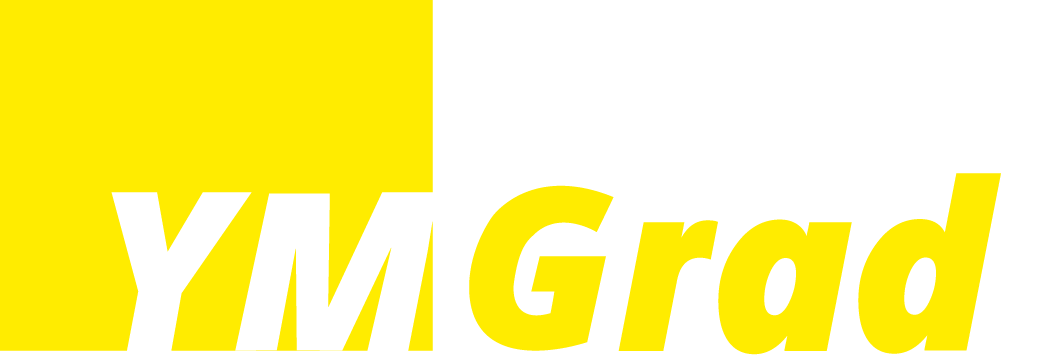H-1B Lottery System Explained
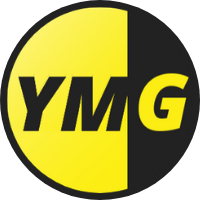
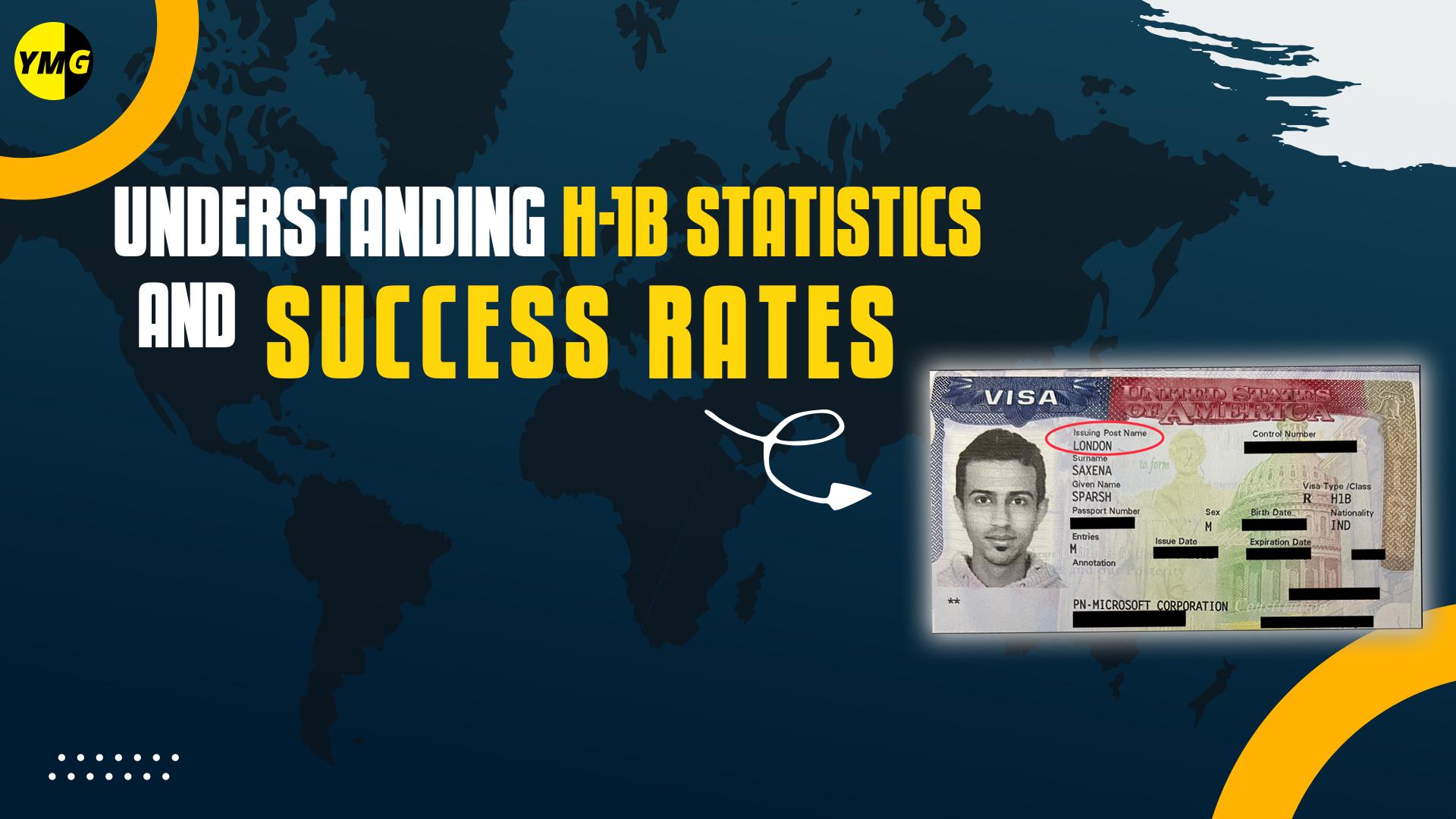
The H-1B, as we know it, is a nonimmigrant visa category that lets your employer petition for you to work in the United States. Since its administration in 1990, Congress has limited the number of H-1Bs made available each year. Currently, the annual statutory cap stands at 65,000 visas, with 20,000 additional visas for foreign professionals who graduate with a master's degree or doctorate from a U.S. institution of higher learning.
For Fiscal Year (FY) 2025, the USCIS has released an updated modernization regulation. Let's be honest: the H-1B is not the easiest ticket to grab. Between the growing demand, complex rules, and changes in the selection process, it can feel overwhelming. Don't worry; YMGrad's got you covered! In this blog, we'll break down H-1B statistics, success rates, and the new lottery system for FY2025 in a way that's easy to understand!
What Exactly Is The H-1B Visa?
Here's the annual cap:
- Regular Cap: 65,000 visas
- Master's Cap: An extra 20,000 visas for those with a U.S. master's degree or higher.
H-1B Success Rates: A Quick Look Back
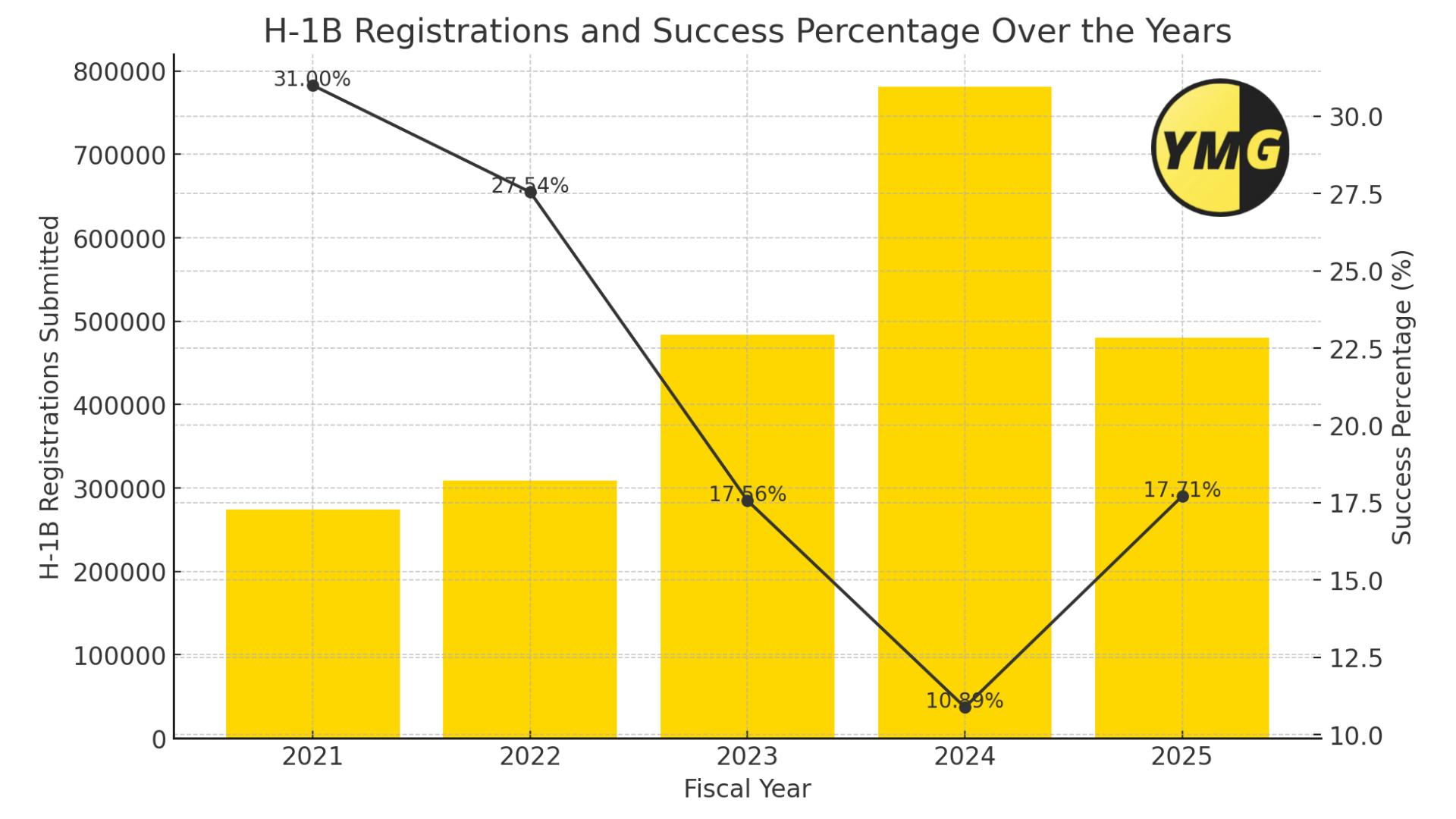
Fiscal Year 2023
- 1
Total Registrations - Around 474,421.
- 2
Selections - Over 127,600 (to account for denials and withdrawals)
- 3
Approval Rate - About 17.56% of regular cap petitions.
Fiscal Year 2024
- 1
Total Registrations - Around 758,994.
- 2
Selections - Approximately 188,400.
- 3
Approval Rate - Dropped down to 10.89%
Fiscal Year 2025
- 1
Total Registrations - Around 474,342
- 2
Selections - Approximately 135,137.
- 3
Approval Rate - About 17.71%
The drop in H-1B applications for FY 2024 and FY 2025 suggests that the current anti-fraud measures have worked, reducing abuse of the system and ensuring fairer selection.
The New H-1B Lottery Process for FY 2025
Beneficiary-Centric Selection Process
USCIS now counts each applicant only once—even if more than one company registers them—to stop employers from teaming up to boost an applicant’s chances.
Digital Makeover
Keep an eye out for the USCIS's revamped online platform, which makes the process so much smoother and transparent for everyone.
Self-Petition
The H-1B Modernization Rule that went into effect on January 17, 2025, now allows start-up entrepreneurs to self-petition for an H-1B visa without depending on an employer to sponsor them.
Why is the Lottery System Changing?
Addressing Exploitation
Recently, USCIS has reported that employers have attempted to game the system by submitting multiple registrations for the same candidate. This led to certain individuals having an unfair advantage over others.
Promoting Fairness
The new system makes sure that each candidate receives an equal shot. This essential means that what is being focused on is individual merit rather than the number of registrations.
Encouraging Genuine Applications
By cracking down on duplicate entries, the updated process prioritizes serious employers and qualified applicants, reducing frivolous filings.
Aligning with Workforce Needs
Another motive behind the H-1B modernization rule is to attract top global talent, especially in STEM fields. These individuals are welcomed as they are essential assets that would add to the innovation and economic growth in the U.S.
How is the H-1B Modernization Rule Different From The Old System?
| Aspects | Old Lottery System | New Lottery System |
|---|---|---|
| Registration Rules | Employers could submit multiple entries for one candidate. | Strict one-registration-per-candidate rule irrespective of how many employers register them. |
| Transparency | Limited clarity on the selection process. | Improved digital platform for a clearer and smoother process. |
| Self-Petition | Employer sponsorship is required. | Allows start-up entrepreneurs to self-petition for an H-1B visa without depending on an employer to sponsor them. |
These updates are designed to level the playing field, ensuring that only genuine, qualified applicants make it through the lottery.
What Can You Do?
Stand Out with Advanced Degrees
A U.S. Master's or PhD., especially in a STEM field, would help you stand out.
Choose Trusted Employers
Work with reputable sponsors who know the ins and outs of the H-1B process.
Get Your Docs in Order
Make sure your application is strong, with no room for error, by getting all your documents prepared in advance. Missing documents could potentially lead to a rejection of your application or delay.
Conclusion
With the new lottery rule introduced, it is a boon for genuine applicants like you. It is a game-changer, especially if you are one who has felt overshadowed by the numerous entries in the past. At YMGrad, we are here not only to help you understand what the visa could do for you but also to help build your profile so you become eligible for the H-1B visa. Our services include multiple points, whether you need to understand the new rules or prep your application, we're here to help you every step of the way. At YMGrad, we're all about turning dreams into reality. Reach out to us today and book a counselling session with any of our counselors to help navigate the H-1B journey and make your U.S. career aspirations come true.
Frequently Asked Questions!

The H-1B visa is a non-immigrant work visa that allows U.S. employers to hire foreign professionals in specialty occupations such as technology, engineering, healthcare, and finance.

The lottery randomly selects eligible petitions from the pool of applicants. There are two caps: the regular cap (65,000 visas) and the master’s cap (20,000 visas for candidates with advanced U.S. degrees).

The changes aim to address issues such as multiple registrations for the same candidate, improve fairness, and ensure that the process prioritizes qualified applicants and genuine employers.

When applications exceed the cap, a lottery system is used to randomly select which petitions will be processed.

Yes, candidates with advanced U.S. degrees are eligible for the additional master’s cap of 20,000 seats and may also receive extra priority under the new system.

Selection odds depend on the number of registrations submitted each year. For FY 2024, over 758,994 registrations were submitted, making the process highly competitive.

It means that no matter how many companies register the same candidate, they’re only counted once. This stops employers from giving a candidate an unfair boost by submitting multiple entries.

The timeline for the registration and lottery process remains similar, but the stricter rules may streamline approvals by reducing fraudulent or duplicate entries.

Yes, the U.S. prioritizes STEM professionals, particularly those with advanced degrees, as they are crucial for innovation and economic growth.

If you are not selected, you can explore other visa options, such as the O-1 visa for extraordinary ability or the L-1 visa for intra-company transfers. You can also try again in the next fiscal year.
